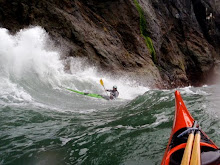Hi Dan,
Boy, I wish I knew about the Penguin Paddler clinics sooner; I would attend all of them if I could! I have been watching YouTube videos and getting inspiration and questions.
Are there certain situations where you would use a bow draw over a low brace turn to turn your boat? They look like both techniques can do the same thing ie change direction 90 degrees.
Thanks, Reader
Dear Reader,
First thing first, I will be teaching clinics throughout the year, just not on Wednesday nights due to sunlight. (Penguin Paddlers Does a clinic series every summer on Wednesday night). I will do some during the week, and possibly a couple weekend ones. Just check the Community Calendar on www.penguinpaddlers.com. Other than that feel free to show up to any of our events and I would be more than happy work with you on stokes.
In regards to your email, that is a excellent question. The two moves do very different things to the boat. The low brace lean turn pivots the boat 90 degree (or so) by putting pressure on the paddle blade and edging into the turn, thus killing all your speed. This only pivots your boat it does not actually change the direction of your momentum. Example would be if you are paddling toward a rock and you do a low brace lean turn, you will turn 90 degrees but your overall momentum will still be headed toward the rock. So in order to avoid the rock you will have to do some sort of forward stoke to change the direction of your boats momentum. This stoke comes in very handy when you need to stop in a hurry. Like skidding your bike when you where a kid. It also becomes very useful when you start paddling in currents and eddies. It allows you to have solid support when crossing currents. It is also the basis for surfing, although there is more details about that that we can get into later.
Now in regards to the Bow draw (or more effective would be Bow Rudder); this stokes is used to turn the boat as well, but instead of killing your speed and pivoting your boat, it allows you to keep your speed and actually change the direction and momentum of your boat. *NOTE* any time you edge to your inside you are slowing the boat down, and anytime you edge to the outside your can keep your speed while turning. So when you do a Bow Rudder, you will be edging away from the stoke in order to keep your speed and allow the curvature of the boats hull to steer the boat where you want it to go. So lets break it down step by step. First thing you will do is initiate your turn with a big sweep stroke on your outside edge, then follow up by holding that edge and planting your bow rudder on the opposite side, and always be looking where you want to go. By doing these three things you are setting yourself up for success. your forward sweep sets your edge and begins the turn, your bow rudder gives you directional control and your vision helps your body lead the boat where you want it to go.
I like to think about it like this. A inside edge turn is like hitting the e-brake on your car. It will cause your car to stop in a hurry and turn you sideways. The bow rudder is like your front wheel. You turn the wheels slowly and it allows your car to change direction and continue holding its speed.
There is a lot more to learn about bow rudders and bow draws, as they are the basis for good boat control. However to avoid confusion I will leave it at that. Please feel free to join us on any of our free clinics and I would be happy to address these questions on the water. Also here are some links to watch that show the difference in Inside and outside turns as well as Lean turns vs bow rudders.
Shawna and Leon from Body Boat Blade did a couple of nice video on edging for Canoe and Kayak Mag. Great shots that help illustrate my points. http://canoekayak.com/kayak/virtualcoach/#ooid=5tMDRwMToDJyvdQ5d1Qk1hMAf4-cv6_3
Here is a short one of me doing some edging bow rudders and draw stokes on flat water: http://www.youtube.com/watch?v=d-Yjsnwk_eE
*If this helps good, If it creates a stumbling block leave it.
Thanks so much for the question.
Dan Arbuckle



No comments:
Post a Comment